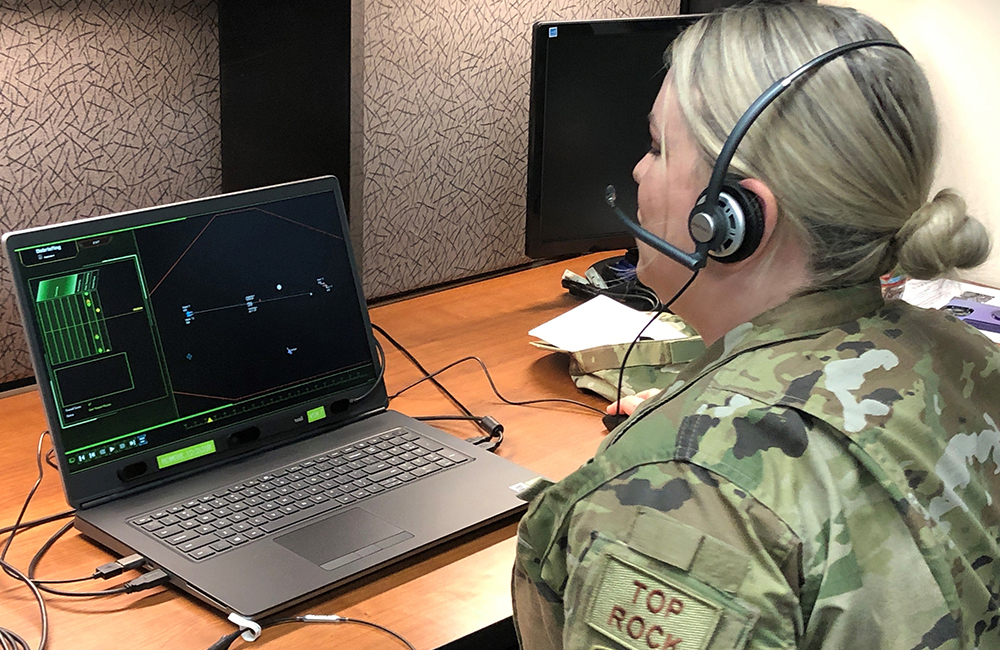DOD AI Priorities Include Data Standards, Workforce Training
The Air Force and the Chief Digital and AI Office laid out AI development plans.

As the Defense Department’s new Chief Digital and AI Office ramps up operations, upskilling the workforce and defining frameworks for new artificial intelligence (AI) capabilities are top priorities for data leaders across DOD.
The Air Force, for example, is in the process of building a framework to enable AI and machine learning at the operational level. Historically, the Air Force has implemented emerging technologies on the business side for functions such as personnel and financial management before slowly implementing on the operations side.
Now, the service wants to accelerate AI innovation for operations in theater.
“Our strategy includes following that same progression using the guardrails associated with that framework we’re putting in at the enterprise level,” said Air Force Deputy CIO Winston Beauchamp at an AFCEA DC luncheon Wednesday. “We’ve gotten in our feedback with industry, let’s not put a heavy governance hand on this because you tend to limit your opportunities for innovation if you require every new innovation to go through a board for approval before you move forward.”
Beauchamp said the Air Force’s goal is not fully autonomous weapons systems, but accelerated decision-making, which aligns with the goals of DOD’s Joint All-Domain Command-and-Control (JADC2) plan.
“We are going to look at embedding portions of AI into many of our operational systems to aid our folks in making decisions,” he said. “Man-in-the-loop decision-making aided by the best information available to them, which often includes using AI as a data and analytics source.”
Beauchamp also highlighted cybersecurity as a “very promising area” for AI to make a difference.
Before DOD services and components can truly take advantage of AI, they need to upskill their workforce, said CDAO Data Scientist Lead James Doswell.
“As we are seeing more people come into the platform and try and build these AI/ML models, agencies are sending data to us and the data you receive one day, the next day something is completely off,” he said at the Wednesday event. “It goes through a lot of different transformations. What we’re trying to do is be able to perform monitoring and learning and perform statistical analysis on that data, learning on top of data as we receive it, then be able to detail-document exactly what’s happening. The amount of time it takes to do that, is there any amount of data drift as it comes in that will affect your AI model? So being able to understand the full lifecycle of the data before it even gets to the AI model [is important].”
DOD also needs to clean up its data because much of it isn’t properly labeled or tagged, he added, or is “in various formats that makes it difficult to work with quickly.”
DOD also needs to define common data standards and modernize its business systems so they can handle AI and machine learning (ML) capabilities.
“We need to find a way to use the power of ML and AI to accelerate our ability to plan for and execute operations [for JADC2] very quickly,” Beauchamp said. “That means communicating very quickly between platforms. All of these things are very complex and time sensitive. Having the ability to communicate in that way requires seamless integration across networks and services. This is not something you’re able to do with separate networks, you need high performing networks and seamless interfaces.”
This is a carousel with manually rotating slides. Use Next and Previous buttons to navigate or jump to a slide with the slide dots
-

Agencies Tackle Infrastructure Challenges to Drive AI Adoption
Federal agencies are rethinking data strategies and IT modernization to drive mission impact and operational efficiency as new presidential directives guide next steps.
5m read Partner Content -

Generative AI Demands Federal Workforce Readiness, Officials Say
NASA and DOI outline new generative AI use cases and stress that successful AI adoption depends on strong change management.
6m read -

The Next AI Wave Requires Stronger Cyber Defenses, Data Management
IT officials warn of new vulnerabilities posed by AI as agencies continue to leverage the tech to boost operational efficiency.
5m read -

Federal CIOs Push for ROI-Focused Modernization to Advance Mission Goals
CIOs focus on return on investment, data governance and application modernization to drive mission outcomes as agencies adopt new tech tools.
4m read -

Fed Efficiency Drive Includes Code-Sharing Law, Metahumans
By reusing existing code instead of rewriting it, agencies could dramatically cut costs under the soon-to-be-enacted SHARE IT Act.
5m read -

Agencies Push Data-Driven Acquisition Reforms to Boost Efficiency
New initiatives aim to increase visibility of agency spending, improve data quality and create avenues to deploy solutions across government.
5m read -

Data Transparency Essential to Government Reform, Rep. Sessions Says
Co-Chair of the Congressional DOGE Caucus Rep. Pete Sessions calls for data sharing and partnerships to reduce waste and improve efficiency.
5m read -

AI Foundations Driving Government Efficiency
Federal agencies are modernizing systems, managing risk and building trust to scale responsible AI and drive government efficiency.
40m watch -

Navy Memo Maps Tech Priorities for the Future Fight
Acting CTO’s memo outlines critical investment areas, from AI and quantum to cyber and space, as part of an accelerated modernization push.
5m read -

DOD Can No Longer Assume Superiority in Digital Warfare, Officials Warn
The DOD must make concerted efforts to address cyber vulnerabilities to maintain the tactical edge, military leaders said at HammerCon 2025.
4m read -

New NSF Program Cultivates the Future of NextG Networks
The agency’s new VINES program looks to tackle key challenges like energy efficiency and future-proofing wireless tech.
21m watch -

DHA CDAO Spearheads Master Data Catalog to Boost Transparency
Jesus Caban plans to boost DHA's data maturity through a new master data catalog, governance frameworks and inventory of tech tools.
5m read




